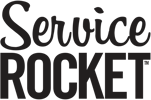Increase Engagement and Collaboration at Work with Ideas Borrowed from Software Development
There’s been a stack of files waiting on the desk for a while. It could be finished, except there is an onboarding in 15 minutes, and a digital training on diversity and inclusion due tomorrow. An employee is upset about a comment made in a meeting, and the CEO is asking for data from 2 years ago regarding the company’s retention rates. This act of juggling human needs with the bottom line of a company is a part of every Human Resource professional’s daily work.
Contrary to common perception, HR is responsible for more than just selecting, hiring and retaining employees; their jobs also include managing performance, developing career paths, and maintaining organizational culture. They’re also expected to perform the almost impossible task of measuring, sustaining and (hopefully) exceeding employee engagement by creating a place that people want to work.
However, many HR teams struggle to balance the goal of engagement with the demand for productivity. They’re routinely challenged by inefficient employee data collection and analysis, competing organizational priorities, and broken feedback loops that significantly slow progress and dramatically extend timelines of essential projects.
Most HR teams have access to tools and technology designed to make their work easier, but still find themselves bogged down in old processes and red tape that negate any meaningful gains in efficiency. Quintessential and time-sensitive HR activities like ordering drug tests, administering new employee training, or conducting employee exit interviews that provide insightful commentary and information about a company’s culture should be done quickly and consistently across the organization.
But the siloed nature of both data and people in modern HR departments creates visibility gaps and limits transparency. It makes collaboration and teamwork — the ability to share responsibilities for executing essential tasks — nearly impossible. So what’s an HR team to do?
What if HR borrowed agility from the software development world?
Agile project management has been a hot trend in software development and is revolutionizing the way products are crafted and launched. But agile isn’t merely a change in the way projects are built. It’s a fundamental mindset and cultural shift that has allowed development teams to collaboratively crush productivity goals.
Instead of following rigid guidelines and documentation, agile allows teams to quickly develop products in stages, with results coming faster and edits made continuously. The methodology comprises daily communication, rapid development work, and constant collaboration to allow people to get the information they need to do their job without slowing down their process. At its core, agile is designed to deliver the best product in the shortest time possible, giving teams the flexibility to understand a collective goal within specific timelines.
Other business functions like marketing and project management have already begun borrowing agile principles from their software development counterparts to accomplish more work in less time. HR teams looking for ways to overcome historically inefficient processes and workflows can and should do the same if they’re committed to transforming the company from the inside out.
How HR Benefits from Agile
Employees expect a lot out of their workplace, including work/life balance, growth opportunities and access to competitive benefits. HR can only deliver on those expectations if the team is supported with the right tools and the freedom to evolve with the changing needs of the employees.
Adopting agile principles will transform the team from a group of specialists with responsibility for one or two primary activities into a collection of generalists capable of executing the most essential tasks across the HR operations. Agile allows an HR team to prioritize and address activities that support organizational goals and employee expectations collaboratively, using a shared to-do list — a Kanban board — to give all team members real-time insight into departmental tasks so they can proactively accept tasks from the lists and complete them in an order that suits their personal timelines and availability.
The upshot is that Agile increases communication, confidence and collaboration across the HR team and its stakeholders. Breaking down the silos of traditional work environments enables them to execute mission critical activities like interviewing and training, while being more responsive to sensitive issues like personnel complaints faster and more thoroughly.
How ServiceRocket Supports an Agile Workplace
An agile workplace removes the archaic silos where HR has traditionally been stuck, giving them the opportunity to work together on the most pressing needs of the company. As the team collaborates, that pile of files that’s been sitting on the desk will disappear, and trainings can be completed quickly and collaboratively. HR will be able to respond quickly to the most pressing needs of the people at their company, increasing engagement and supporting the team.
Contact us today to learn more about how ServiceRocket can help make your HR team quick, collaborative and data-driven; engaging employees and supporting your company.
